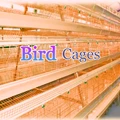
Parrots: Species
1. African grey parrot
The African Grey Parrot is a famous parrot that is extremely intelligent and has amazing abilities. These fast-moving parrots are also capable of imitation. Therefore, they can become the focus of pet shows. They are always trustworthy, but if ignored, they will shed feathers.
Diet: Sprouted or soaked grains are the main food for the 6-year-olds. Also fruits, vegetables and rice can be given. During the breeding season boiled carrots and eggs can be given.
Size- 36 cm.
Laying eggs - 2–5 eggs
Duration of incubation- 28-30 days
Release - 10-13 weeks
Lifespan - 50 years
2.Hyacinth Macaw
They are the largest macaws. These parrots can be seen in bright blue colour. The yellow eye circles on the face gives more attraction to them. It is also an endangered species.
Food: Millet cereal. Carrots, corn, apples and groundnuts
Deployment: South America, Brazil
Size: 100 cm.
Laying eggs: 1 egg
Duration of incubation: 28-29 days
Release: 14 weeks
Lifespan: 50 years
3. Military Macaw
The main attraction of the zoo and the park is the military macaw. They need a bigger cage. Although they reach adulthood in the 3rd year, their nature is not always reliable. Babies have gray eyelids.
Food: Cereals, fruits, fodder
Size: 70-75 cm.
Laying: 2 water eggs sharp at both ends
Duration of incubation: 26-27 days
Release: 81-91 days
Lifespan: 50 years
4. Scarlet Macaw
They have orange-red feathers. It comes in yellow, green and blue colors. They are very interested in water and have soft feathers.
Food: Cereals, bananas, carrots, tomatoes
Homeland: South America
Size: 85 cm.
Laying: 2-4 eggs, sharp at both ends
Duration of incubation: 24-25 days
Release: 100-106 days
Lifespan: 50 years
5. Yellow-Collared Macaw
They have red eyes and a yellow line around its neck. They need large nests as they are unable to survive extreme cold and extreme heat.
Food: Cereals and fruits
Homeland: 38 cm.
Laying: 3-4 eggs
Duration of incubation: 24-26 days
Release: 70 days
6. Umbrella Cockatoo
The pearl cap on the head is decorated with feathers. They are adept at mastering techniques easily. Young ones can be identified by the grey color of the eye ball. During the breeding season, fruits should be well fed.
Length -45 cm.
Shell- 1-2 eggs
Closing period -28 days
Release- 84-105 days.
Tips for Parrots Caring
-
Do not leave the birds alone in the cage. Accommodate spouses as much as possible. In this way the physical and mental problems of the birds can be solved to some extent.
-
If the nest is intended to be inside the house, it should be placed in a corner so that it is safe.
-
Do not place bird nests near windows that are exposed to high temperatures and heat. Most birds do not need more than 12 hours of light.
-
Large parrots should be kept away from electric wires and electrical connections. Do not use light bulbs when not needed.
-
The cage should have two feeding bowls and two water bowls. One can be washed with disinfectant and the other can be used.
-
For parrots and large birds, attach heavy clay feeders to the floor and for birds such as pheasant and quail, attach plastic feeders to the floor.
-
If there is rat infestation in the aviary, place rat traps and use poison.
Parrots are good companions for humans. So, if you are thinking of bringing home a parrot, please do so.

















